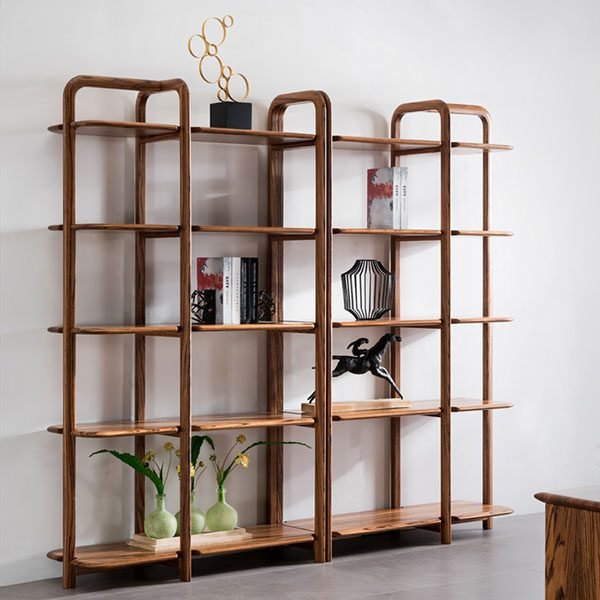“Quality sofas last a lifetime.”
Types of sofas and their durability
Sofas are an essential piece of furniture in any living room, providing comfort and style to the space. When investing in a sofa, it is important to consider its durability and how long it will last. There are various types of sofas available on the market, each with its own level of durability.
One of the most common types of sofas is the traditional fabric sofa. Fabric sofas come in a wide range of styles and colors, making them a popular choice for many homeowners. However, fabric sofas are not as durable as other types of sofas, such as leather or microfiber. Fabric sofas are prone to staining and wear and tear over time, especially in homes with children or pets.
Leather sofas, on the other hand, are known for their durability and longevity. Leather is a strong and resilient material that can withstand daily use and still look great for years to come. While leather sofas may be more expensive upfront, they are a worthwhile investment for those looking for a long-lasting piece of furniture.
Microfiber sofas are another popular choice for those seeking durability. Microfiber is a synthetic material that is resistant to stains and easy to clean, making it a practical option for busy households. Microfiber sofas are also known for their comfort and softness, making them a cozy choice for lounging.
In addition to the type of material, the construction of the sofa also plays a significant role in its durability. Sofas with hardwood frames are generally more durable than those with softwood or metal frames. Hardwood frames are sturdy and can support the weight of multiple people without sagging or breaking. Additionally, sofas with high-quality springs and cushions will maintain their shape and comfort over time.
When considering the durability of a sofa, it is important to also take into account the level of use it will receive. Sofas in high-traffic areas, such as family rooms or living rooms, will naturally experience more wear and tear than sofas in less frequently used spaces. To prolong the life of your sofa, consider rotating the cushions regularly and using slipcovers to protect the fabric from spills and stains.
Overall, the durability of a sofa depends on a variety of factors, including the type of material, construction, and level of use. While fabric sofas may be more affordable and come in a wider range of styles, leather and microfiber sofas are generally more durable and long-lasting. By choosing a sofa that is well-made and suited to your lifestyle, you can enjoy its comfort and style for many years to come.
Tips for extending the lifespan of your sofa
Sofas are a significant investment for any household, so it’s important to take care of them to ensure they last as long as possible. With proper maintenance and care, a good quality sofa can last for many years. Here are some tips for extending the lifespan of your sofa.
First and foremost, it’s essential to regularly clean your sofa to prevent dirt and stains from building up. Vacuuming your sofa once a week can help remove dust and debris that can cause wear and tear over time. For stains, it’s best to spot clean immediately with a mild detergent and water to prevent them from setting in.
Another important tip for extending the lifespan of your sofa is to rotate the cushions regularly. Flipping and rotating the cushions can help distribute the wear and tear evenly, preventing one side from becoming more worn than the other. This simple step can help prolong the life of your sofa and keep it looking fresh for longer.
In addition to regular cleaning and cushion rotation, it’s also important to protect your sofa from direct sunlight and heat. Prolonged exposure to sunlight can cause the fabric to fade and deteriorate over time. To prevent this, consider placing your sofa away from windows or using curtains or blinds to block out the sun during the brightest hours of the day.
Furthermore, it’s a good idea to invest in a quality sofa cover to protect your sofa from spills, pet hair, and general wear and tear. A sofa cover can easily be removed and washed, keeping your sofa looking new for longer. Additionally, using arm covers can help protect the arms of your sofa from oils and dirt from hands and arms.
Lastly, it’s important to avoid sitting on the arms or back of your sofa, as this can cause damage to the frame and upholstery. Encourage family members and guests to sit properly on the seat cushions to prevent unnecessary strain on the sofa. By following these simple tips, you can help extend the lifespan of your sofa and keep it looking great for years to come.
In conclusion, taking care of your sofa is essential for ensuring it lasts as long as possible. By regularly cleaning, rotating cushions, protecting from sunlight, using a sofa cover, and avoiding improper use, you can help extend the lifespan of your sofa and keep it looking new for years. Remember that a little maintenance goes a long way in preserving the beauty and functionality of your sofa.
Signs that it’s time to replace your sofa
Sofas are an essential piece of furniture in any living room, providing comfort and style to your space. However, like any other piece of furniture, sofas have a limited lifespan. So, how long do sofas actually last?
The lifespan of a sofa can vary depending on several factors, such as the quality of the materials used, the frequency of use, and how well it is maintained. On average, a well-made sofa can last anywhere from 7 to 15 years. However, there are some signs that indicate it may be time to replace your sofa.
One of the most obvious signs that it’s time to replace your sofa is visible damage. This can include tears in the fabric, sagging cushions, or broken springs. If your sofa is starting to show signs of wear and tear, it may be time to start looking for a replacement.
Another sign that it’s time to replace your sofa is discomfort. If you find yourself constantly shifting around to get comfortable or if you feel like you’re sinking into the cushions, it may be a sign that your sofa has lost its support and needs to be replaced.
Additionally, if your sofa no longer fits your style or the aesthetic of your space, it may be time for an upgrade. As trends change and your tastes evolve, it’s important to have furniture that reflects your personal style and complements your decor.
Furthermore, if your sofa is no longer meeting your needs in terms of size or functionality, it may be time to consider replacing it. Whether you need a larger sofa to accommodate more guests or a sofa with built-in storage, it’s important to have furniture that meets your lifestyle requirements.
In some cases, it may be more cost-effective to replace your sofa rather than trying to repair it. If the cost of repairs is significant and the sofa is already showing signs of wear and tear, it may be more practical to invest in a new sofa that will last longer and provide better value for your money.
Ultimately, the decision to replace your sofa will depend on a combination of factors, including the condition of your current sofa, your budget, and your personal preferences. If you’re unsure whether it’s time to replace your sofa, consider consulting with a furniture expert for advice.
In conclusion, sofas typically last between 7 to 15 years, but there are several signs that indicate it may be time to replace your sofa. From visible damage and discomfort to changes in style and functionality, there are many factors to consider when deciding whether to replace your sofa. By paying attention to these signs and considering your own needs and preferences, you can make an informed decision about when it’s time to invest in a new sofa for your living room.
Заключение
Софы могут прослужить от 7 до 15 лет, в зависимости от качества материалов и ухода за ними.



